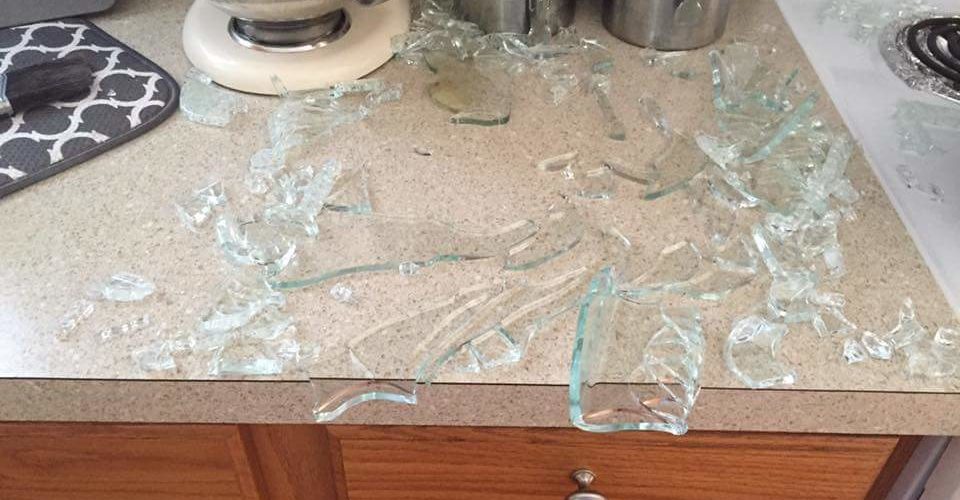It’s true: Pyrex and similar glass bakeware can explode, but if you follow my two simple guidelines, you’ll never experience it yourself.
As preposterous as it sounds, exploding Pyrex is not an urban legend. Under the right circumstances, the glassware will shatter dramatically or crack and split. I know because I’ve seen it happen three times. To be fair, only one was an explosion. The other two were merely breakages. Still, they were bummers. It’s really easy to poo-poo this explosion business until you have the misfortune to see it happen yourself, whereupon you become a crusader for the cause of Handling Pyrex With Care. Welcome to my crusade to vanquish fear by sharing facts.
While exploding Pyrex is far from an everyday event, it’s not a rare occurrence. It’s entirely preventable if you follow a few simple guidelines.
Pyrex as well as other glass items cannot withstand thermal shock. If you take a Pyrex dish or lid from the refrigerator or freezer and put it in a hot oven this thermal shock is likely to cause it to shatter. The same will happen if you take a hot Pyrex object & run it under cold water.

How Pyrex Is Different From Other Glass
Don’t blame Pyrex. It’s been a fixture in American kitchens since 1915, when the Corning, New York factory produced its first glass pie plate. When used correctly, it’ll soldier on for years.
Pyrex and other similar glassware are not like everyday glass jars and bottles. It’s tempered, meaning it’s been heated and cooled in a manner that makes it more durable under future temperature fluctuations. It’s less likely to break under an impact, and when it does, tempered glass breaks into diamond-like cubes instead of long, pointy shards, so it’s a little safer to deal with.
:max_bytes(150000):strip_icc()/__opt__aboutcom__coeus__resources__content_migration__simply_recipes__uploads__2019__06__Guide-to-Loaf-Pans-LEAD-20-ad4bf5b45b8b4f1193343bd60bb451b9.jpg)
How to Prevent Exploding Pyrex
Relax, you can and should continue using your Pyrex. Just show it some love.
Avoid sudden changes in temperature. Don’t put frozen pies or casseroles made in Pyrex dishes straight from the freezer into a hot oven. Don’t pour boiling liquids into glass measuring cups, and let hot Pyrex dishes cool before you run water over them.
Store it reasonably. You may have heard that vintage Pyrex, which is made with sturdier borosilicate glass, is superior to the soda-lime glass pieces that the company began switching to in the 1950s. While it’s true that borosilicate glass is more resistant to thermal shock, it’s not immune to it. Also, if you are clumsy like me and frequently drop things or stack them carelessly during storage, the glass may get microcracks that you can’t see. These microcracks make even best-quality glassware vulnerable to thermal shock.
:max_bytes(150000):strip_icc()/Simply-Recipes-Pumpkin-Chiffon-Pie-METHOD-2-41f389494231449bb19989281619def4.jpg)
Why glass dishes can explode unexpectedly
FAQ
Can Pyrex dishes shatter?
Can Pyrex go in a 450 degree oven?
Why would a glass dish break in the oven?
